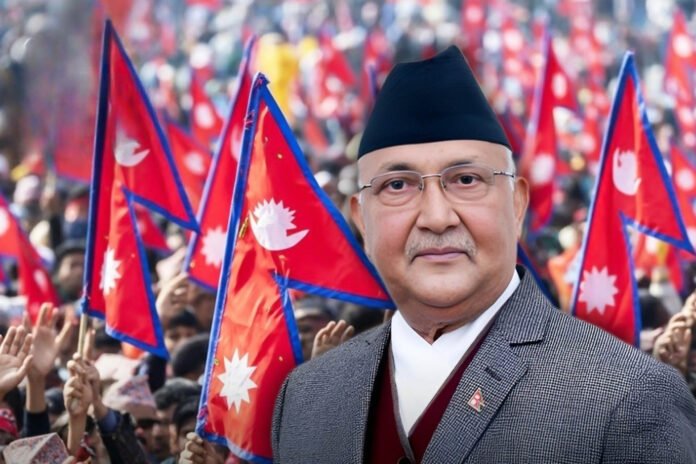Nepal Protests Today – Gen Z youth rise against corruption, nepotism, and social media ban, sparking historic demonstrations and political upheaval.
Nepal Protests Today: Social Media Ban
The catalyst that triggered the unrest immediately was the move by the government to block 26 social media sites, including Facebook, X (what was once twitter) and YouTube. The government made the argument based on the necessity of regulation and accountability, saying that such platforms did not register or adhere to new law on local oversight. Although the authorities justified the action as a legal requirement, other observers, human rights groups and the opposition parties, instantly branded it a pure form of censorship with the aim of crushing dissent and limiting information distribution. This was perceived with a sense of outrage especially to the youth who use the sites not only as a social platform, but as an essential business, communication with family and a political platform.
The Greater Miseries: Underground Fire
The social media ban was just a tip of the iceberg that aroused a fire of discontent in the population. The real causes of the uprisings are much more complicated and they have years of simmer in them. The grievance of the protesters revolves around entrenched corruption and nepotism that has dominated Nepal politics.
The Nepo Kid Movement
A viral internet campaign, popularly known as the Nepo Kid movement, spread in the weeks before the protests, primarily on such sites as Tik Tok and Reddit. This campaign revealed and criticized the lives of political leaders children as lavish and luxurious, with foreign visits, supposedly paid by taxpayers. These open exhibitions of riches were contrasting the real life of the ordinary youths in Nepal that are going through a miserable economic situation.
Due to high levels of unemployment among young people of about 20 percent, according to the World Bank, an estimate of over 2,000 young people are leaving the country daily in search of employment in foreign countries. The Nepo Kid campaign was an effective visual value to the perceived inability of the government to perform on the promise of prosperity and accountability and the political elite and their families appeared to be perpetually on a free ride. Economic despair and social inequality were the cause of this generational distance that made the mass movement the perfect storm.
The Escalation: Deadly Clashes to Peaceful Protest
Monday’s Carnage
The peaceful demonstrations that have been accumulating over the days turned out of proportion on Monday, September 8, 2025. In Kathmandu tens of thousands of protesters, among them, predominantly school-going children, thronged the streets. The mob gathered at the Parliament house and shouted things such as, “Stop corruption, not social media! and “We want our country back.”
Security forces countered the demonstrators who broke barricades and tried to enter the complex with a vehement and lethal display of force. Tear gas, water cannons, rubber bullets and, worst of all, live ammunition were some of the tools used by police to clear the crowds. The fights became fatal and at least 19 people died with hundreds more wounded. Witnesses told how protesters were shot in the head and chest, a violent reaction that attracted the international outrage and wanted human rights monitoring organizations such as Human Rights Watch and the United Nations to conduct an independent investigation.
When the government opened fire on its citizens, including the majority of the unarmed students, the people were simply fired up and the protest which had been initially a call to reform turned into a full fledged revolution against an oppressive regime.
Tuesday’s Fury
Monday bloodshed kindled a still more intense storm on Tuesday. Although curfews were introduced in the largest cities such as Kathmandu, Lalitpur and Pokhara, thousands of people disobeyed the regulations and went back onto the streets.
The demonstrations became an out-and-out attack on the icons of political authority. The Parliament building was burnt down along with homes of political leaders including the personal house of Prime Minister K.P. Sharma Oli, the home of the President and houses of former Prime Minister Sher Bahadur Deuba and his wife, the Foreign Minister, Arzu Rana Deuba.
In an outraging show of social outrage, there were videos that went round on the social media showing violent attacks on ministers by protesters in the streets. Bishnu Paudel, the Finance Minister, was also beaten up and chased down by Sher Bahadur Deuba and his wife were also assaulted. The situation was extremely bad to the extent that the Nepal army came to airlift ministers and senior officials to their dangerous homes and offices.
The fact that the people disobeyed the curfew and were ready to face the state representatives embodying its power face-on demonstrated how much people felt frustrated and how much they wanted to witness the demise of the political order.
The Political Aftershock and an Indecisive Future
The government started to crack under the continuous pressure and general public outcry. Late on Monday, the Home Minister, Ramesh Lekhak resigned with what he termed as moral responsibility over the fatal police crackdown. Nevertheless, this was not a sufficient concession to calm down the protesters.
On Tuesday, Prime Minister K.P. Sharma Oli who was also under growing pressure of the streets and of his own party coalition resigned. The protesters cheered at the announcement, yet there was little it could do to defeat the underlying anger and the call to a wider-ranging systemic change. The state too lifted its ban on social media, a step activists such as Sahana Vajracharya, a reporter who was there during the crackdown, said was not sufficient. Her words, the government is covered with blood, resonated with the feelings of millions of people who now want to know who is responsible of the death of their friends and peers.
The resignation of Oli has created a power vacuum and the nation is currently tasked with the difficult role of instituting a new government at the time of high levels of popular distrust.
New Faces, New Hopes
The youth movement has demonstrated its strength as it is neither linked to the conventional political party, nor is it confined to any particular demands. The demonstrations have spawned leaders such as Balendra Shah the independent mayor of Kathmandu who has become the symbol of divorce with dynastic politics and a new way ahead.
The popularity of the Rastriya swatantra party (RSP) that is widely popular among the young electorate is an indicator of a growing need to bring fundamental change in governance.



